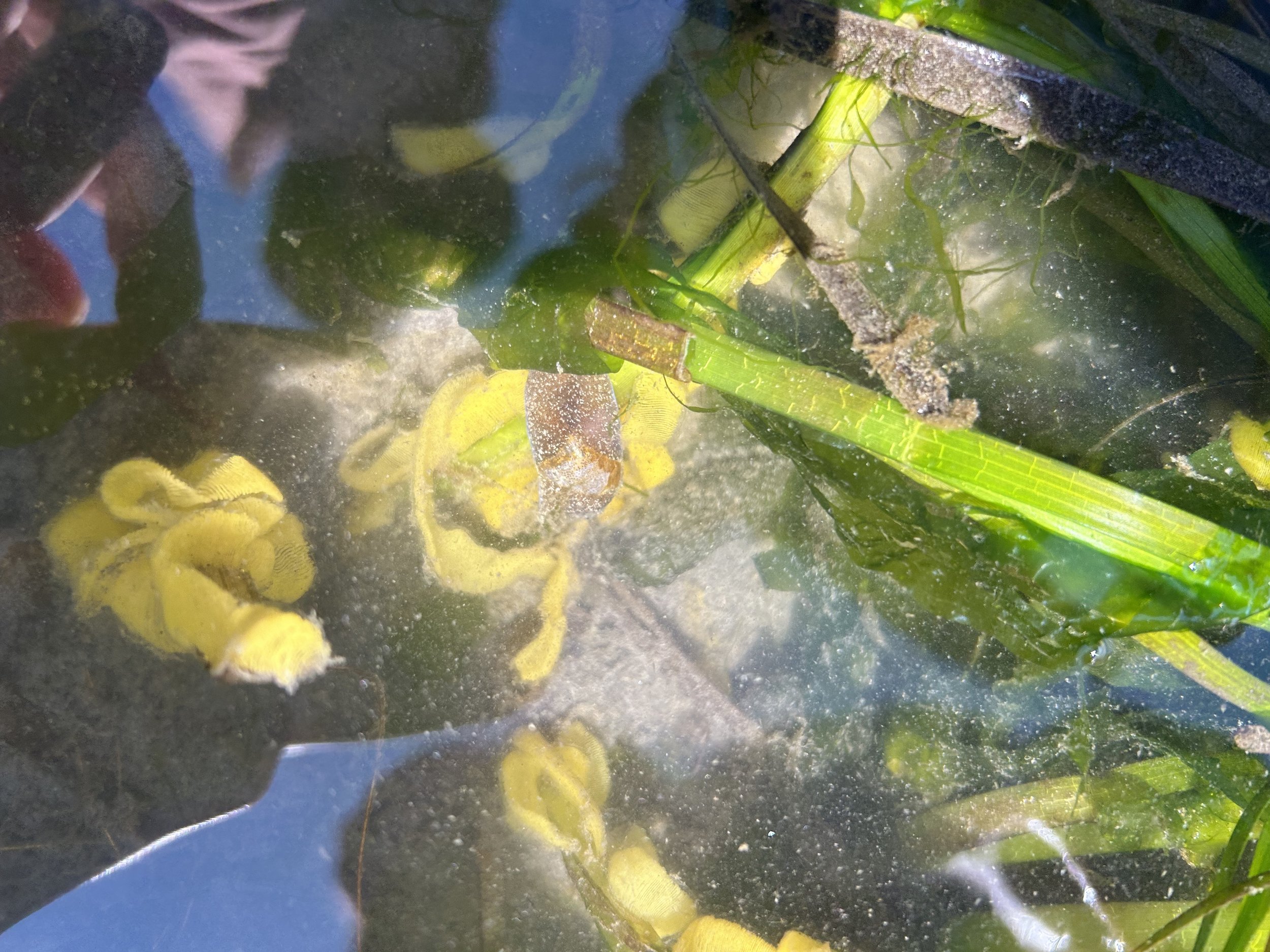Full Circle: From Camper to Camp Leader
by Quinn McAleer, Assistant Camp Leader
It has been a special, full circle summer for me at the Centre. I was a summer camper for seven years (2012 - 2018) and my week of Salish Sea School was always something I looked forward to. This summer, I was the Assistant Camp Leader and loved being able to pass on my Salish Sea School experiences to this year’s campers.
Here are my top eight favourite finds of camp through the years, including THIS year!
2013 — Red Sea Cucumber
I was always excited to turn over a rock and find a hidden sea cucumber! Red sea cucumbers were one of my favorite low-tide finds, especially when I could see their bright orange feeding tentacles extended into the water to catch plankton. These reddish or pinkish brown sea cucumbers range in length from 10 to 25 cm and are found on rocky shorelines, living between rocks and in crevices.
Six-rayed Star
2014 — Six-rayed Star
Exploring Glass Beach has always been one of my favorite camp activities because I could find six-rayed stars! This species’ large variation of colors and patterns fascinated me, and I loved finding some individuals smaller than my fingernail. Six-rayed stars only grow to about 9 cm and can be numerous in the intertidal zones of rocky shores. They are unique in that, unlike most other sea stars, they brood their eggs and young. The female forms a cup-shaped brooding area under her body in which she cleans and tends to her eggs.
Horse Clam
2016 — Horse Clam
Digging for horse clams on Sidney Island is one of my favorite memories of Salish Sea School and one that I hoped to share with the campers this summer. I was always amazed to find a clam as big as my head or foot buried under the sand! Horse clams have an oval shell that can be up to eight inches long, and they can weigh 3-4 lbs. Their siphon extends from a wide hole in their shell and has two openings at the end — an inhalant siphon, used to take in water containing oxygen and plankton, and an exhalant siphon, used to expel waste water from the clam. Horse clams are not able to fully retract their siphon into their shell. (Clams were always returned to their place in the sand.)
2017 — Juvenile Red Rock Crab
I never would have guessed that this animal (see image below) would grow up to be one of my favorite crab species: a red rock crab! It was surprising to me how the diverse coloration of juvenile red rock crabs is so different from adults; they can be striped, spotted, etc. Adult red rock crabs have a red, wide, smooth carapace and large claws with distinctive black tips. They often shelter in rocks or bury into the sand to avoid predators such as river otters, large fish and octopuses.
Juvenile Red Rock Crab
Sea Lemon
2018 — Sea Lemon
Ocean Advocates summer camp provided me with the unique opportunity to visit the Indigenous sea garden on Russell Island, where we found numerous marine animals, my favorite being a bright yellow sea lemon! I felt fortunate to be able to witness the ancient clam beds and learn some of the ways in which Coast Salish people managed their land and resources. It was also interesting to learn about the efforts of Parks Canada, in partnership with the WSÁNEĆ Nations, to restore these historic sea gardens in the Salish Sea and recover traditional knowledge about them and their inhabitants. It was a very special summer camp experience!
Russell Island Sea Garden
Clown Nudibranch
2023 — Clown Nudibranch
Portland Island is always a highlight of Salish Sea School, and this summer was no exception. We were so happy to find a clown nudibranch under a rock at low tide, which I had never seen before! This distinctive nudibranch is white to pale yellow in color and has vibrant orange spots. These bright colors warn predators that the nudibranch is toxic and would not be a good meal. Clown nudibranchs live in rocky areas of intertidal zones and primarily feed on bryozoans.
2023 — Hairy Lithodid Crab
We were stumped when we came across this mysterious crab on Portland Island and learned, with the help of an ID guide, that it was a hairy lithodid crab! I had never experienced this crab before and was excited to find a new-to-me species. This crab’s carapace, claws and legs are covered in spines and hair, giving it a bristly appearance. It is found under rocks and in crevices and is omnivorous, feeding on other animals or on algae.
Bubble Snail Eggs
2023 — Bubble Snail
We found so many bubble snails on Sidney Island this year, as well as their yellow, ribbon-like eggs. I enjoyed introducing campers to this fascinating animal that has characteristics of both a nudibranch and a snail! Bubble snails have small, thin shells that often do not cover their entire body and can burrow through the sand using their large heads, called headshields. They are typically found in mudflats and eelgrass meadows, and move to shallow waters in July and August to lay their eggs.
These are just eight of many fascinating creatures I’ve seen during my years of summer camp here. I’ll always be grateful for the experiences I’ve had and the knowledge I’ve gained about life in the Salish Sea!










